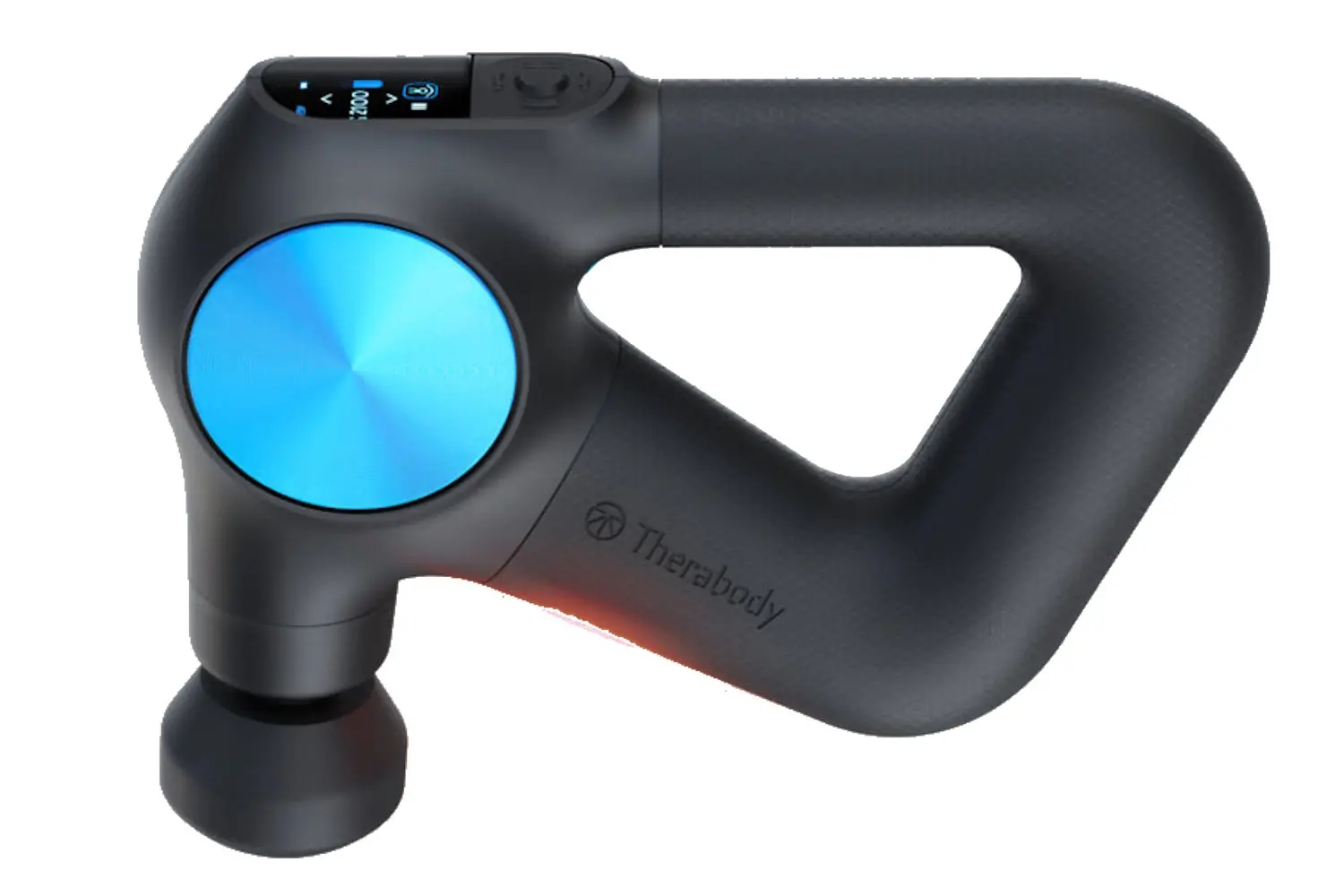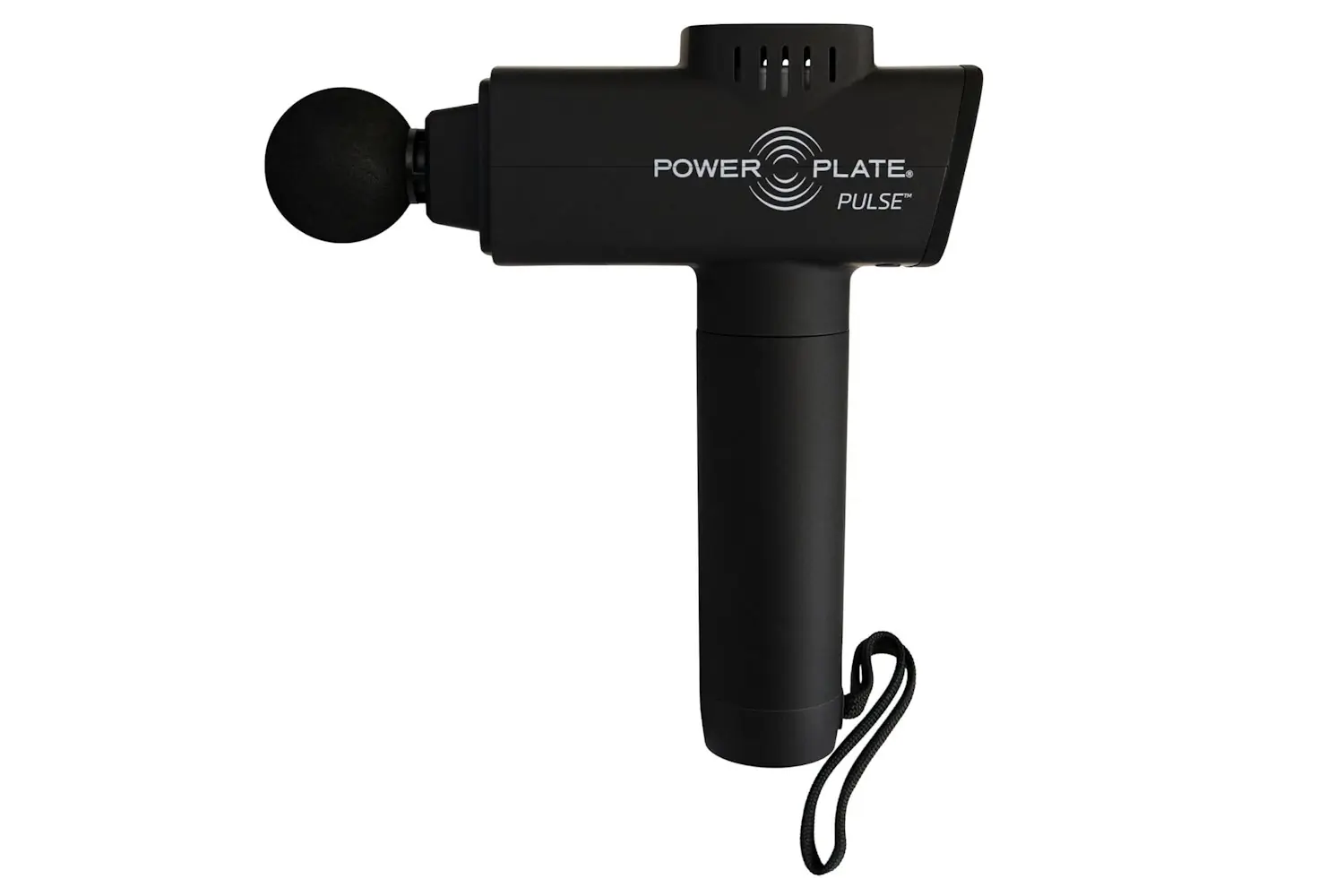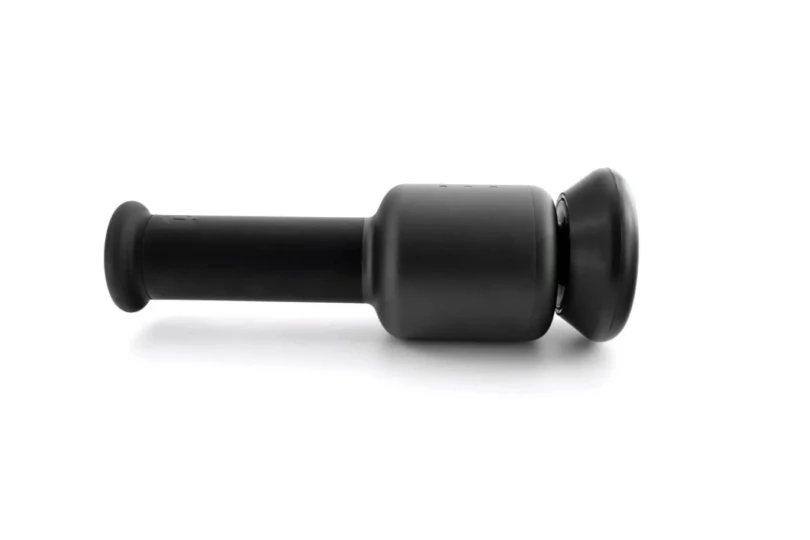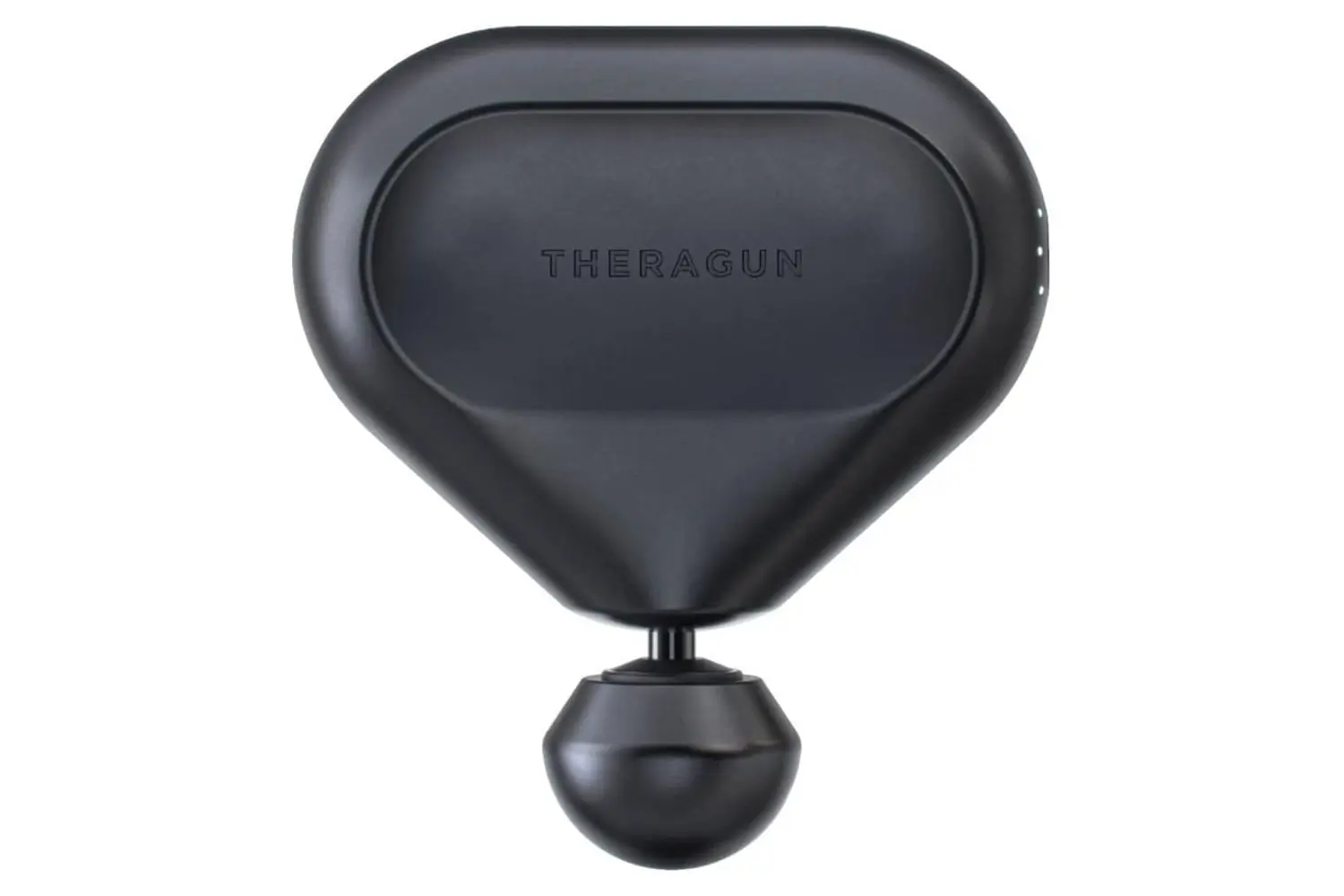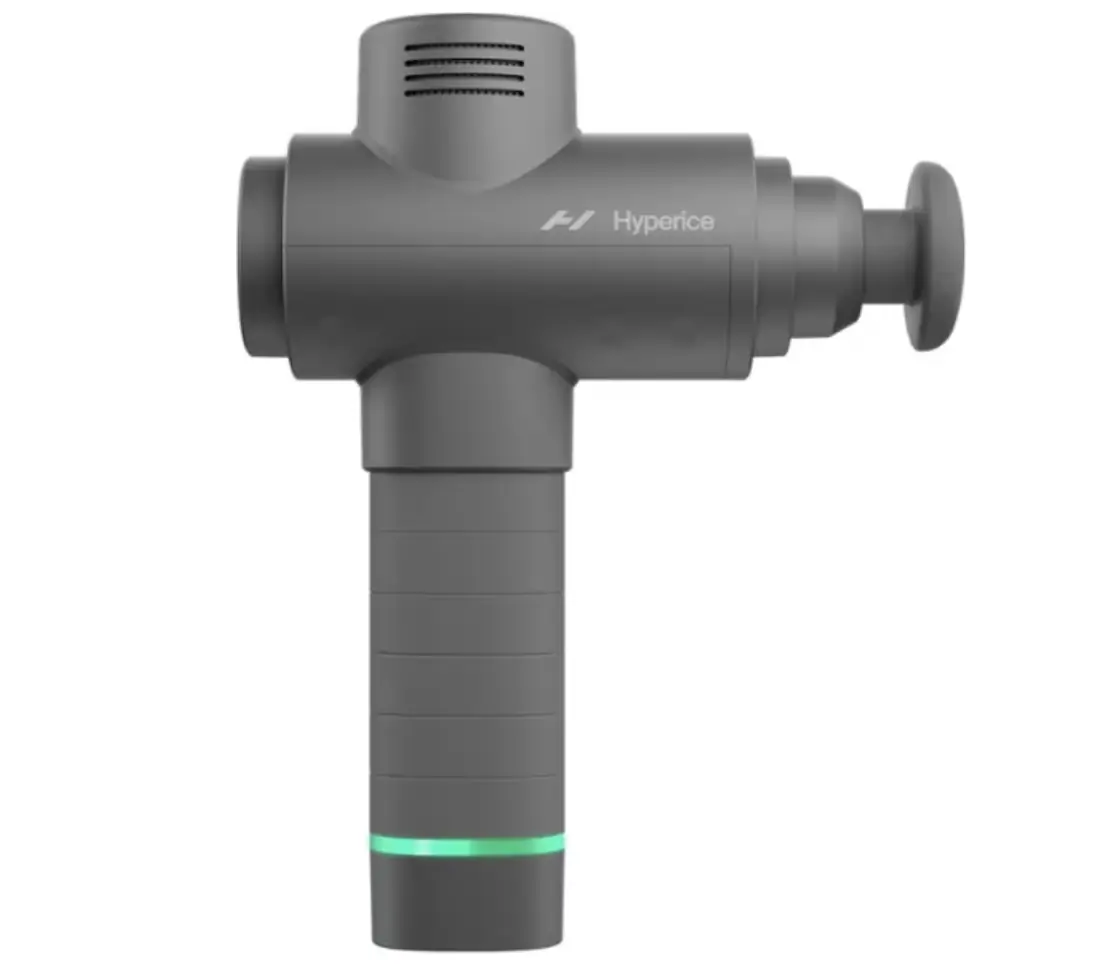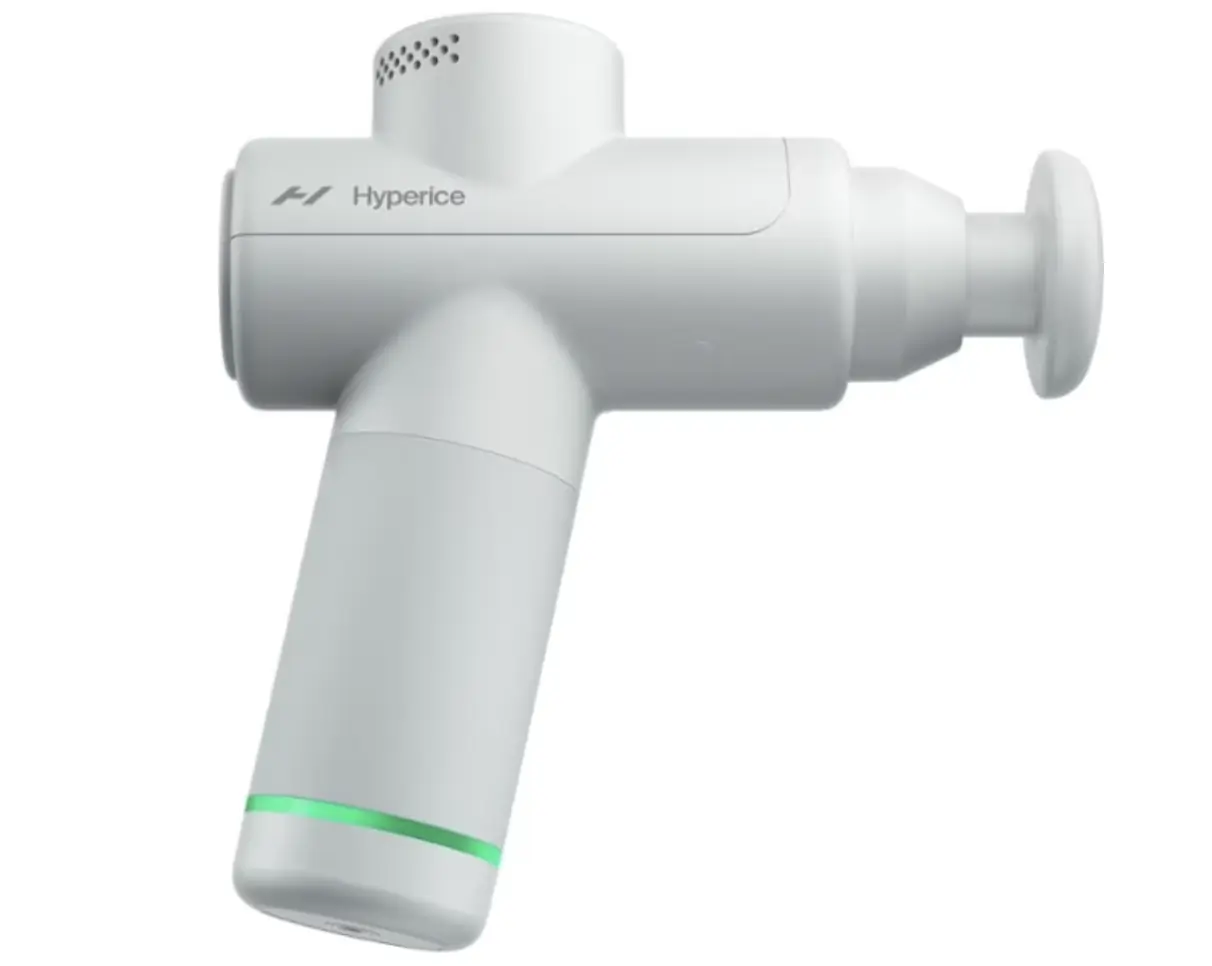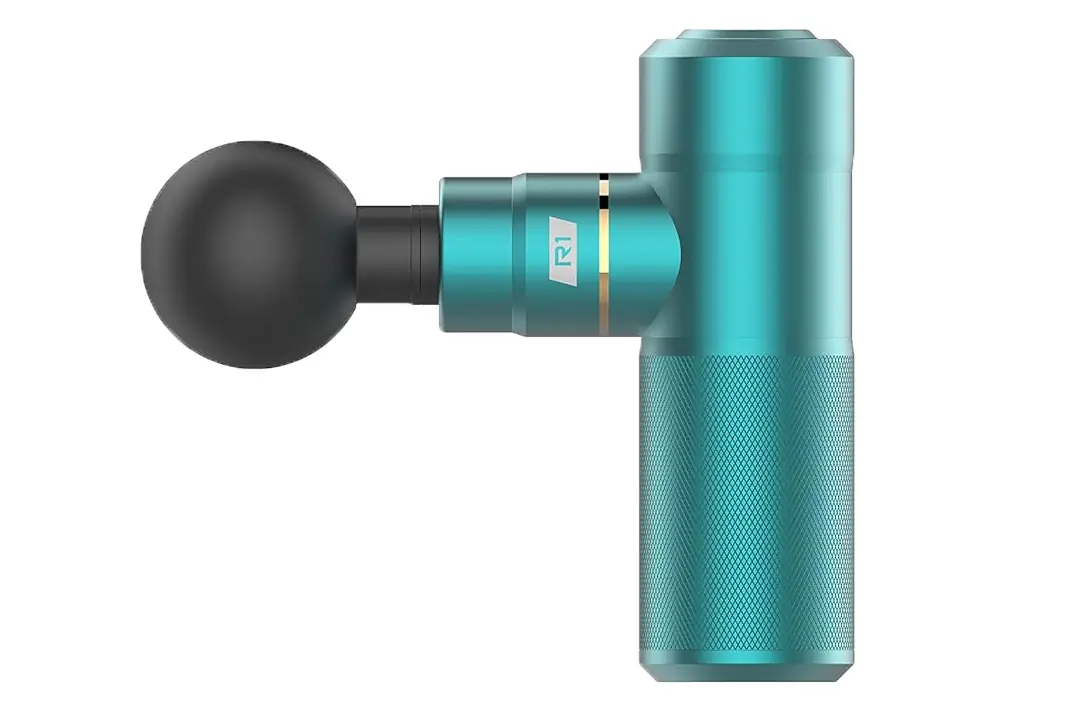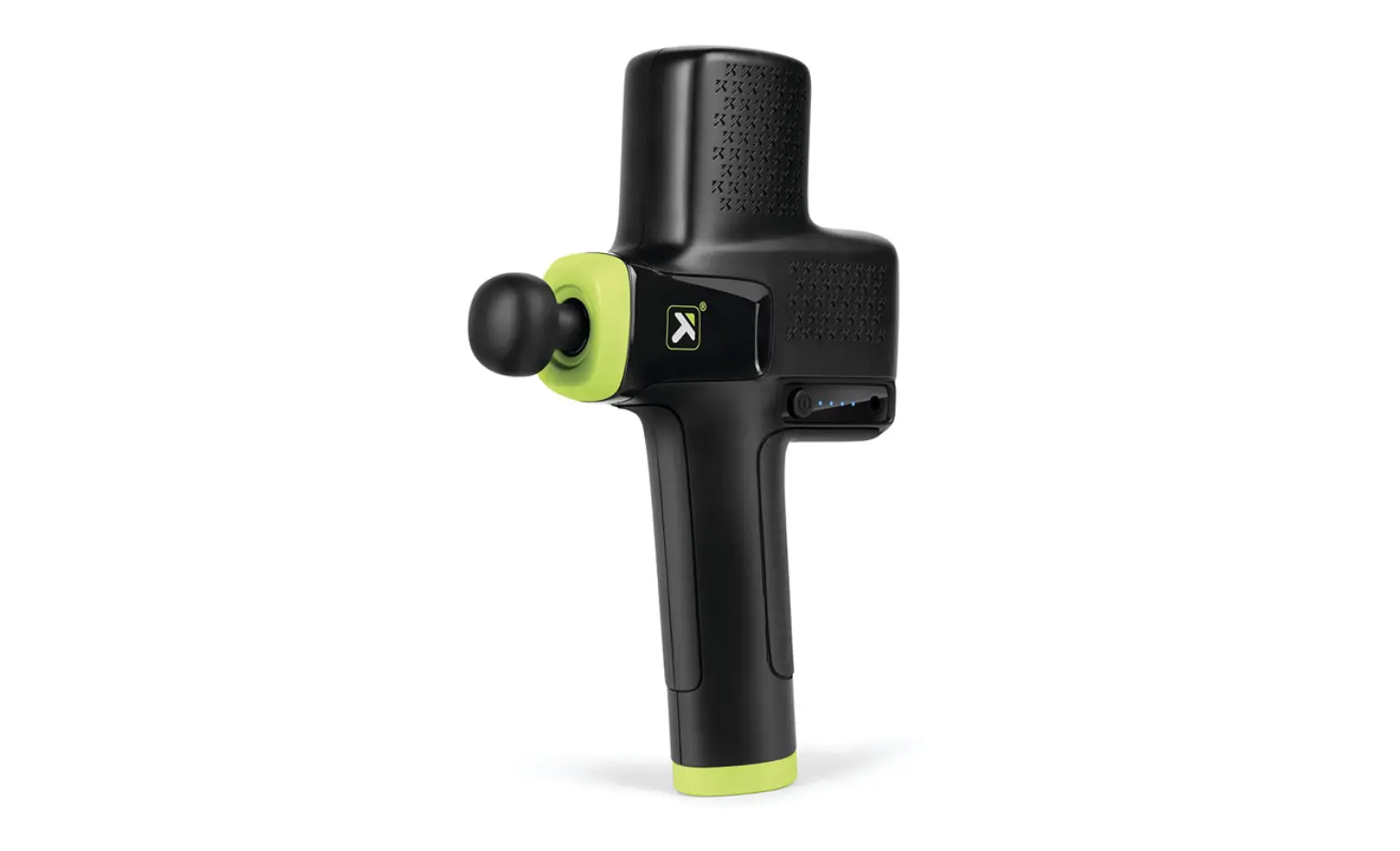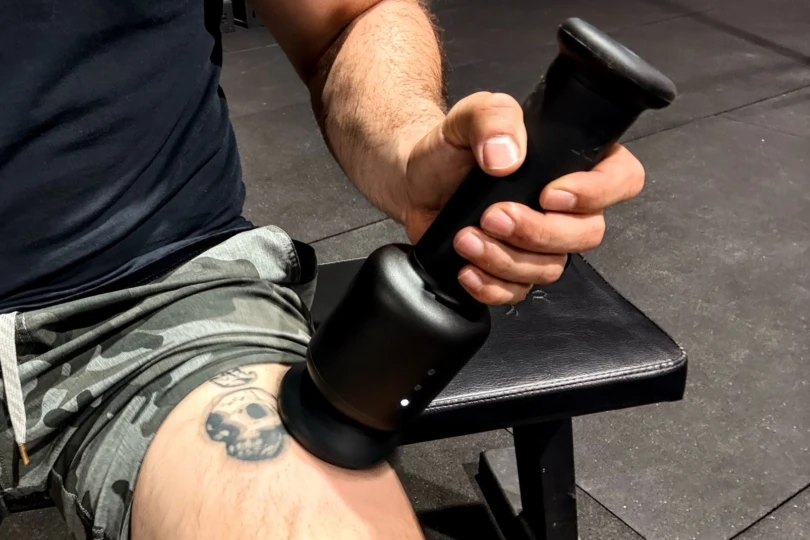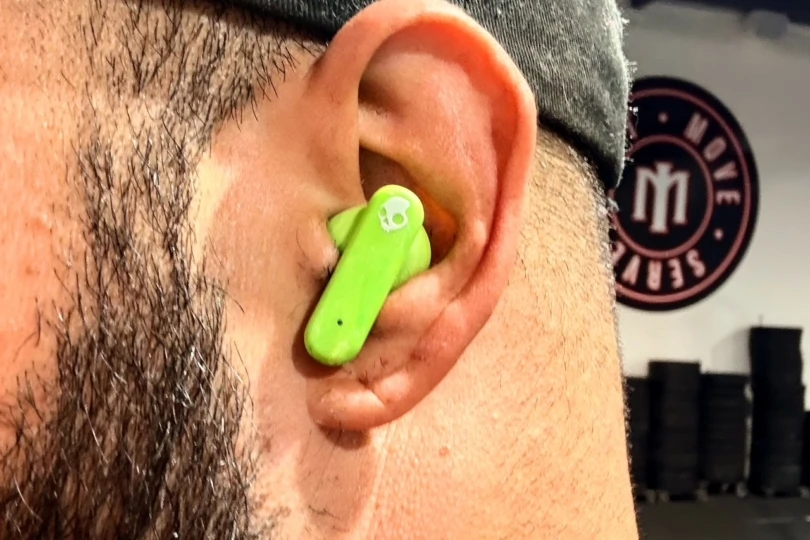While foam rollers are great, it’s hard to beat the healing power of a massage. Over the past five or so years, percussive therapy has changed how gym-goers and physical therapists treat soreness and chronic pain and relieve the buildup of lactic acid. Best of all, quality percussion massagers (a.k.a. massage guns) are a portable, powerful, one-time investment.
Percussion massagers are a staple in the fitness world. They are designed to loosen muscle knots, improve blood flow, help alleviate soreness, and reduce inflammation. While scientific evidence of these claims is mixed at best, the anecdotal evidence from athletes of all stripes (skiers, runners, hikers, etc.) makes a good percussion massager worth consideration.
Our testers include personal trainers, competitive athletes, and generally, the kinds of folks whose activity levels result in being sore more often than not. Through hours of research and months of testing, we’ve narrowed down the best percussion massagers on the market. If you’ve yet to try one, this is a great place to start.
Editor’s Note: We refreshed this article on December 8, 2025, by adding the super-comfortable Rally Orbital Massager.
The Best Percussion Massagers of 2025
Top Picks
Theragun PRO Plus
- Power range: 1750-2400 PPMs
- Attachments: 7
- Battery life: 150 minutes
- Weight: 2.9 lbs.
Pros
- Quiet motor
- Customization
- Solo supported
- Bluetooth pairing
- 2-year warranty
Cons
- Expensive
- Red light therapy’s efficacy requires further study
Turonic GM5 Massage Gun
- Power Range: 1200 to 3200 rpm
- Attachments: 7
- Battery life: 8 hours
- Weight: 1.72 lbs.
Pros
- Good value
- High-quality case and massage heads
- Long-lasting battery
- Quiet
Cons
- Not the most powerful for deep tissue needs
Power Plate Pulse 3.0
- Power range: 1,300-2,800 PPM
- Attachments: 4
- Battery life: 2.5 hours
- Weight: 2.9 lbs.
Pros
- Good value
- High-quality case and massage heads
- Long-lasting battery
- Extremely quiet
Cons
- Not the most powerful for deep tissue needs
Rally Orbital Massager
-
Power
8.1
-
Comfort
9.0
-
Battery Life
7.0
-
Ease of Use
7.5
- Speed range: 1,600, 2,400, 3,200 rpm
- Attachments: 3
- Battery life: 90 min.
- Weight: 2.4 lbs.
Pros
- Comfortable enough for daily use
- A high-speed setting for deeper knots
- Three speed settings
- Quiet
Cons
- One of the heavier options
- Pricey
Theragun Mini
- Power Range: 1,750-2,400 PPM
- Attachments: 2
- Battery life: 2.5 hours
- Weight: 1.43 lbs.
Pros
- Compact size
- Ergonomic grip
- Speed range
- Price
- Quiet
Cons
- No additional head attachments included
- Lower no-stall threshold
Chirp RPM
- Power Range: N/A
- Attachments: N/A
- Battery life: 4 hours
- Weight: 3 lbs., 11 oz.
Pros
- Handheld and stationary use opens up massage possibilities
- 5 different speeds to dial in force
- Extended battery life compared to many other massagers
- Simple on/off button use — just press and go
Cons
- Bit spendier than other percussive massagers
- Tough to really pinpoint areas
Best of the Rest
- Power Range: Not listed
- Attachments: 4
- Battery life: 3 hours
- Weight: 1.8 lbs.
Pros
- Sleek, stylish design
- Excellent price point
- 5 different attachment photos
- Quiet operation
- Bluetooth connectivity
Cons
- Not as powerful as other options
- Power Range: 2,300-3,200
- Attachments: 2
- Battery life: 3 hours
- Weight: 1.5 lbs.
Pros
- Sleek design
- Lightweight
- Highly portable
- TSA-approved
Cons
- Less powerful than other models
- No Bluetooth connectivity
- No carrying case
- Power Range: 1,800-3,200
- Attachments: 4
- Battery: 7 hours
- Weight: 1.2 lbs.
Pros
- Quiet and effective at deep-tissue massage
- Compact
- Reliably long battery life
- Hefty, solid, ergonomic feel and refined aesthetic
Cons
- Minimal instructions
- A little heavy to bring to the crag
- Power Range: 2,100-3,300
- Attachments: 1
- Battery: 2 hours
- Weight: 2.4 lbs.
Pros
- High ppm
- Quiet motor
- Price
Cons
- Only one head attachment
- Irritating seam on the handle
- No carrying case
Percussion Massager Comparison Chart
| Percussion Massager | Price | Battery Life | Weight |
|---|---|---|---|
| Theragun PRO Plus | $599 | 2.5 hours per battery | 2.9 lbs. |
| Turonic GM5 Massage Gun | $160 | 8 hours (lowest setting) | 1.72 lbs. |
| Power Plate Pulse 3.0 | $250 | 2.5 hours | 2.9 lbs. |
| Rally Orbital Massager | $499 | 1.5 hours | 2.4 lbs. |
| Theragun Mini | $199 | 2.5 hours | 1.43 lbs. |
| Chirp RPM | $250 | 4 hours | 3.75 lbs. |
| Hyperice Hypervolt 2 | $199 | 3 hours | 1.8 lbs. |
| Hyperice Hypervolt Go 2 | $129 | 3 hours | 1.5 lbs. |
| Roll Recovery R1 | $129 | 7 hours | 1.2 lbs |
| TriggerPoint Performance Impact | $260 | 2 hours | 2.4 lbs. |
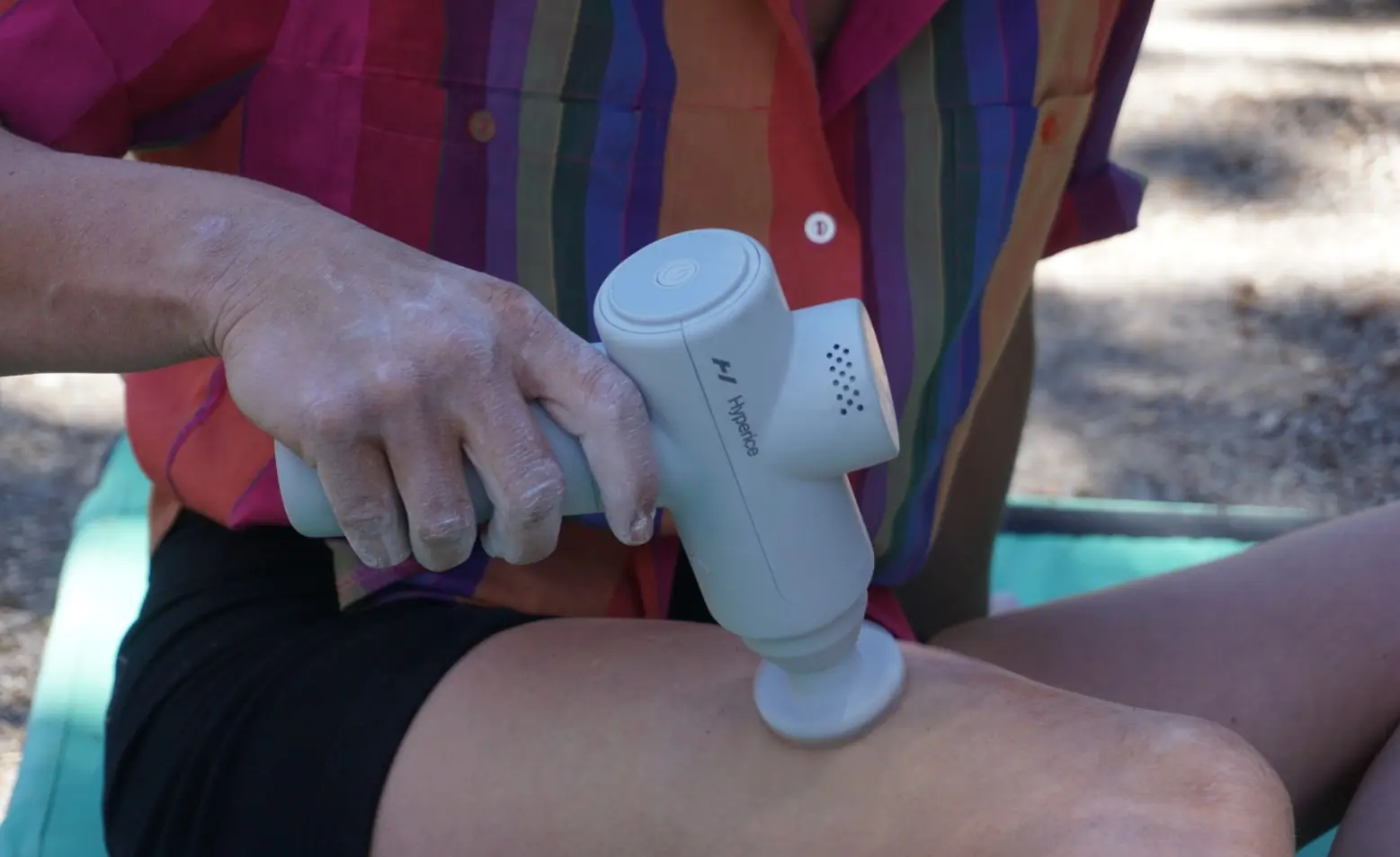
How We Tested Percussion Massagers
The GearJunkie team is full of mountain bikers, climbers, trail runners, and recreators of all types. We live our best moments in the outdoors, but we aren’t as young and spry as we used to be.
For us, the value of recovery tools is increasing with each passing season. As massage gun technology has improved over recent years, they have become a staple of our active lives.
Our Expert Testers
GearJunkie Affiliate Managing Editor Billy Brown is a competitive fitness athlete and has spent countless hours recovering from long days in the gym and long adventures in the mountains.
He’s spent decades looking for the best ways to prepare for his next event, and massage guns have always been on the vanguard of his recovery methods. In 2024, Billy tested various massage guns at CrossFit competitions like the Never Forgotten Games in Redding, CA and the Northern California Classic in Sacramento, CA. Over time, Billy settled on a few go-to’s that made the top of this list.
Other testers include GearJunkie contributors Austin Beck-Doss, Paul Mandell, and Mallory Paige.
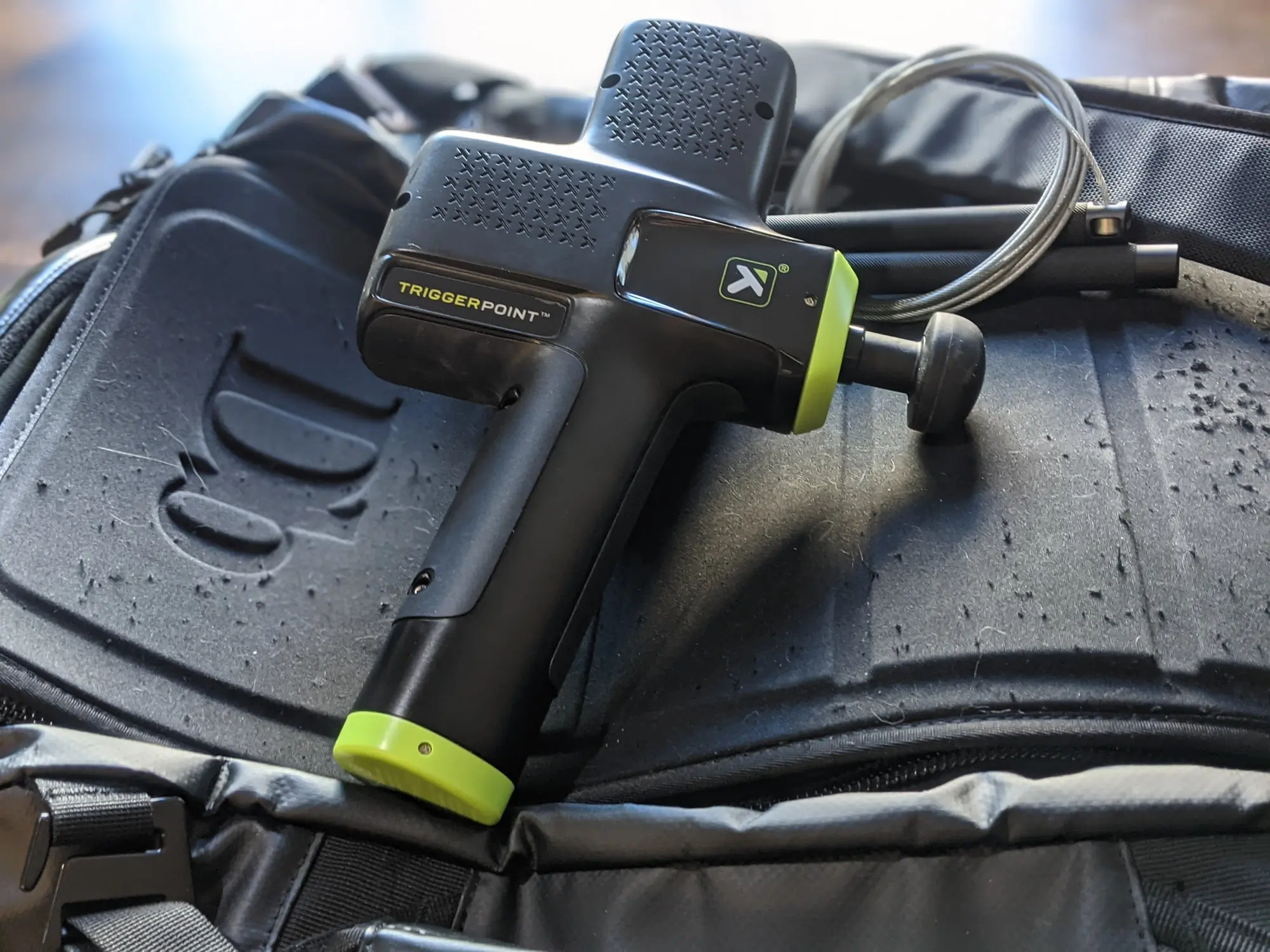



Our Testing Process
For us, the value of recovery tools is increasing with each passing season. As massage gun technology has improved over recent years, they have become a staple of our active lives.
To identify the best massage guns on the market, we’ve tested dozens of models and carefully observed their long-term effectiveness. When testing, we pay careful attention to design, power, customizability, battery life, and more.
Buyer’s Guide: How to Choose a Percussion Massager
The best percussion massager for you depends on a variety of factors. Most importantly, start by thinking about how you plan to use it.
Is it for daily sports recovery? Or do you just need a shoulder massage every now and then? Once you understand how you’ll use it, you can easily prioritize the considerations outlined below.
Speed and Power
A percussion massage gun’s speed is normally measured in percussions, or strokes, per minute (ppm). Typically, these will range anywhere from 1,200 to 3,400 ppm.
In general, the speed will increase the intensity of the massage. Having a wide range available can also be a great benefit for different aims.
When using a percussion massage gun, it seems obvious that the harder you press, the deeper the massage will get.
Some massage guns will give up to 60 pounds of pressure without stalling, while others can only handle up to 20 pounds. If you’re looking for a more surface-level massage, lower power can suffice.
If you apply too much pressure with a low-power massage gun, the percussion will stall, which can be harmful to the motor over time.




Attachments
Different head attachments are designed for different muscle groups. Each massaging head delivers specific outcomes with each unique shape.
These attachments are just another factor that allows for customization and, if used correctly, can provide more relief to sore muscles. There are five baseline head attachments to choose from — though some products come with more options.
Cushioned
A cushioned head is recommended for those just starting to get the feel for their percussion massager. It doesn’t allow for very deep penetration and utilizes a lot more vibration therapy tactics for more sensitive areas such as the neck. This is a great option to warm up muscles before starting to get into deep tissue.




Round
For bigger muscle groups, grab the round head attachment. It has more give than other attachments but can still provide deeper penetration. The glutes or hamstrings are ideal candidates for this attachment.
This head is specifically designed to reach into smaller muscle groups and provide some precision pressure. It has a two-prong shape that applies pressure to both sides of the spine, targeting the muscles that wrap around your spinal cord.
It’s also great to use on forearms around the bone for providing deep relief after an intense forearm workout (specifically, climbing).
Flat
A flathead attachment mainly focuses on the vibration therapy aspect of massage guns. The contact area of the flathead allows you to cover a higher surface area, making this another great attachment for large muscle groups.
It still has the capacity to reach deep into those muscle groups, providing the power needed for serious relief and an increase in range of motion.
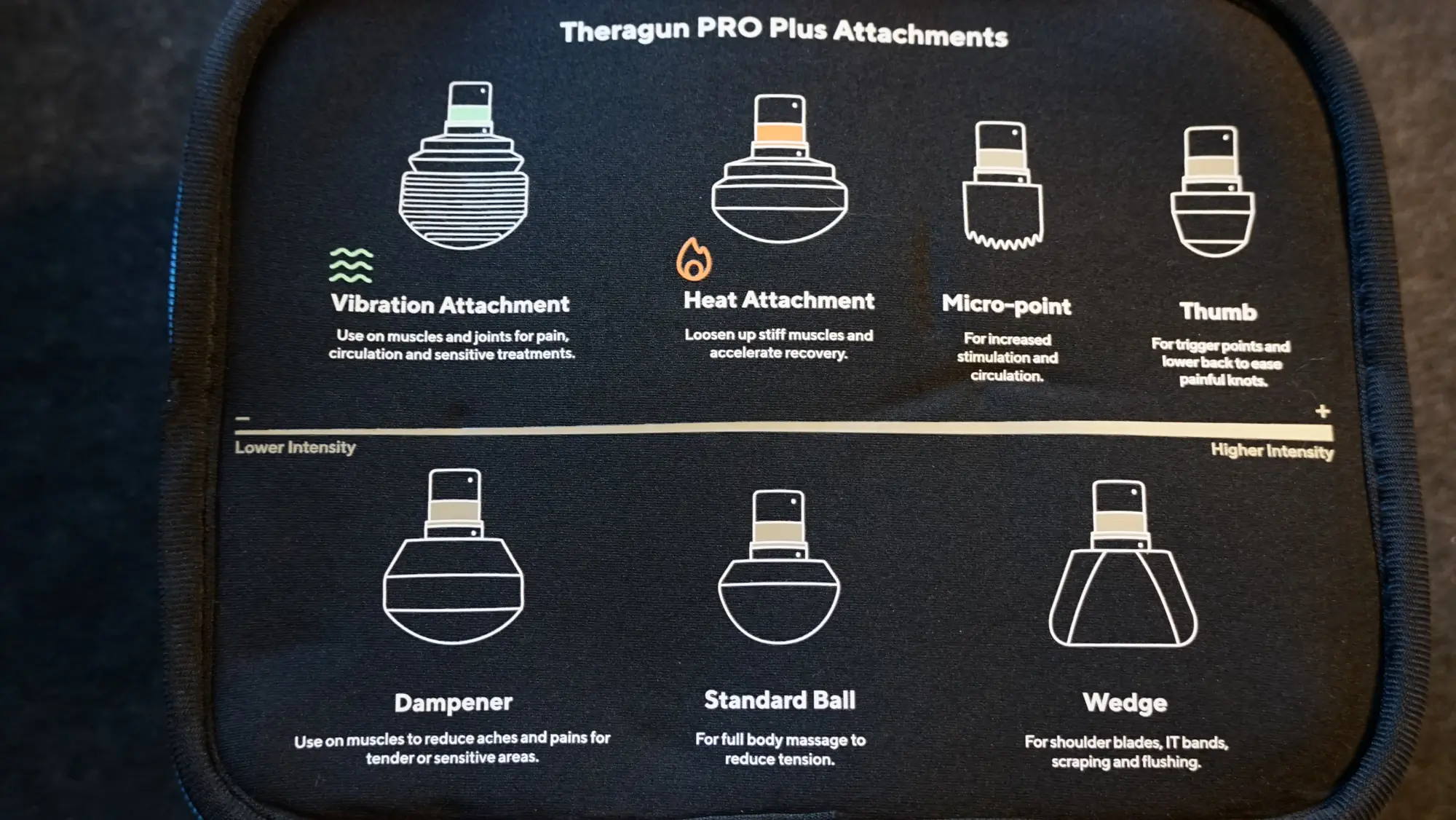



Bullet
Compared to a flathead attachment, a bullet is on the opposite end of the head attachment spectrum. It brings all the percussion and vibration into one specific point. The ability to target with immense precision gives it the most intense power.
There are several additional head attachments that a lot of percussion massagers will offer, while others come with only one head and don’t even allow you to switch it up. On our list, the Hyperice Hypervolt 2 and the Theragun PRO Plus both bring all of the basics in head attachments with no fluff.
Portability
Your percussion massager should be able to join you in all your travel plans. Many of the percussion guns on our list come with a handy carrying case that can make them incredibly easy to travel with. Most of the options here come in under 3 pounds, which won’t add too much to the gym bag or carry-on.
For the best portability, the Theragun Mini delivers all of the power most of the other products have but at a fraction of the weight. It’s easy to pack and bring wherever you may go.
Battery Life
Long workouts often lead to long massage sessions, so make sure you have the battery to handle it. The Theragun PRO Plus undoubtedly has the best battery options, with each of the two included batteries lasting up to 2.5 hours. When one runs out, popping the second in will save your session from an abrupt end.
Price & Value
Massage gun prices can range from under $100 to $500 and more. If you’re looking for the most powerful, full-featured massagers, expect to pay closer to that higher range. Fortunately, there are effective massage guns in every price range. Here’s what to expect in the budget, mid-tier, and premium price ranges.
Budget
All of our picks under $100 sacrifice features like top-end power, long battery life, and some ergonomic comfort. But options like the VYBE Pro Muscle Massage Gun ($90) offer nine speed settings and enough power to work out tough knots.
Mid-Tier
If you’re willing to spend $100 to $200, you can expect more power, lighter guns, multiple massage heads, and lower noise levels. Options like the Triggerpoint Performance Impact ($200) offer speeds of up to 3,300 PPM and a weighted head, so you don’t have to press down to dig into muscle fibers.
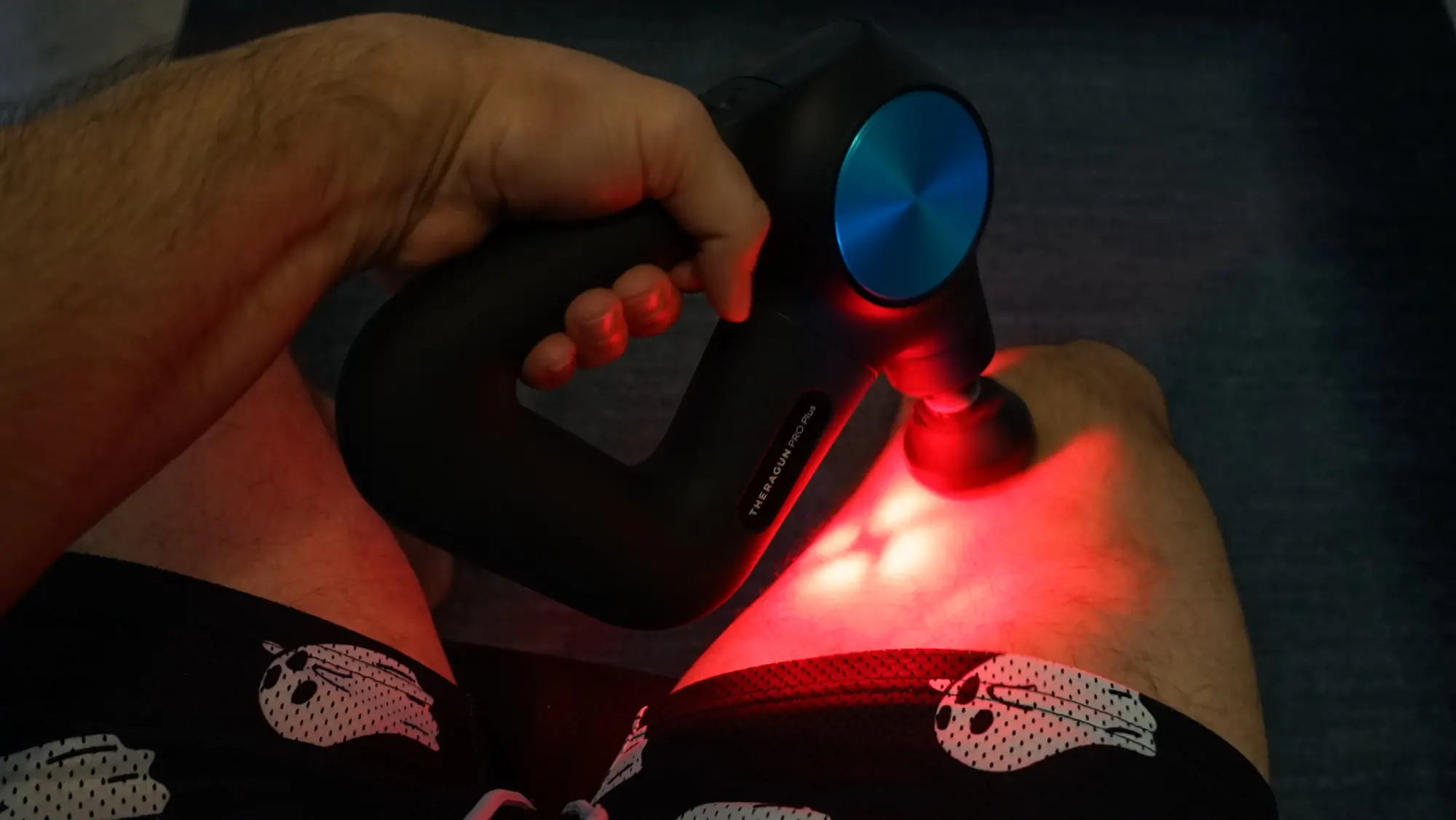



Premium
Spending over $200 gets you into the top range of features, power, ergonomics, and battery life, as well as quieter operation. For $250, you can snag the Power Plate Pulse 3.0, which offers more power than most people need but is one of the quietest guns on our list.
At the top end of the price range sits the Theragun PRO Plus ($599), which, in addition to a powerful, quiet motor and long battery life, comes with features like a red light therapy setting, plenty of power and speed settings, and an app that allows you to customize your recovery.
FAQ
The best percussion massager for you depends on a lot of variables. If you regularly train hard or want a massager that can stand up to daily use, the Theragun PRO Plus is the best percussion massager on the market.
If you’re looking just to try it out, the VYBE Pro Percussion Massage Gun may be right up your alley.
A percussion massager is an incredibly versatile tool. Use it when you wake up with a sore neck because of a rough night’s sleep, after a big training session, or as a daily part of your self-care routine.
When getting into percussive and vibration therapy, a cushioned head is often suggested as the first attachment to use. It offers a lot of forgiveness and doesn’t penetrate too deeply, too quickly.
From there, you can move on to a round head for a deeper massage, whereas more pointed attachments work well for targeting very specific knots.

